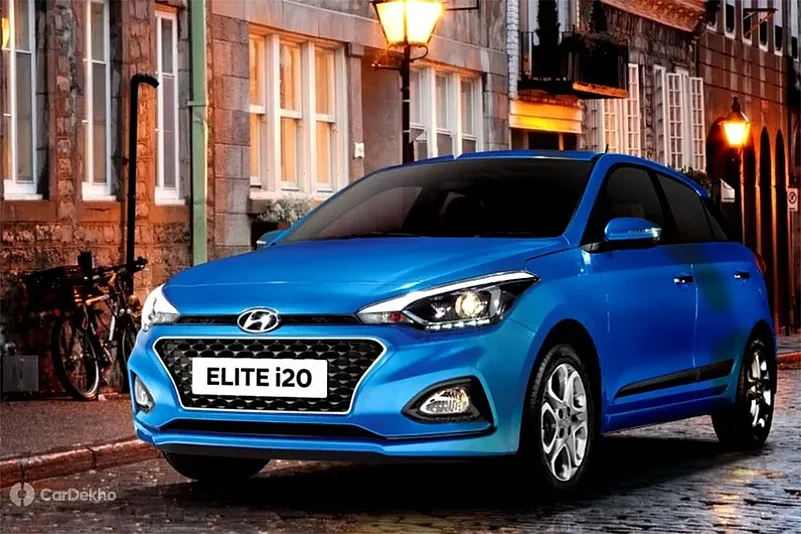2020 Elite i20 to get Sonata-inspired front grille and headlamp design.
The new hatch will get projector-type fog lamps like Venue and Verna.
The rear licence plate will move back from the boot lid to the bumper.
The tail lamps seem to be smaller than the ones on the current Elite i20.
Test car gets a sunroof as well. It’s not on offer on the India-spec model.
Hyundai has been testing the next generation Elite i20 in India as well as overseas and the latest spy images from Europe reveal its front design. Although the car is camouflaged, the front grille, headlamps and the fog lamp housing are visible in the spy images.

To start with, the front grille seems larger, wider and sharper as well, much like how it is on new-age Hyundai sedans -- the Sonata and Elantra facelift (yet to be offered in India). The resemblance with the Sonata, however, is more apparent as you will notice the sweptback headlamps that are separated from the grille.
The test car gets projector headlamps, but the light colour suggests that it’s a halogen unit. However, the production-spec model in India could feature LEDs. The test mule also features a sunroof. Hyundai doesn’t offer a sunroof on the India-spec, second-gen i20. The spy pics also suggest that the fog lamps are projector type, which are also offered on the Venue and Verna.

Images of the rear of the 2020 Elite i20 suggest that Hyundai will switch back to placing the licence plate on the bumper. The second generation i20, in its pre-facelift avatar, wore the licence plate on the bumper. However, Hyundai placed the licence plate on the boot lid when it gave the hatchback a cosmetic update in 2018.
While there’s heavy camouflage at the rear, we can spot some metal around the tail lamps suggesting that they won’t be as wide as those on the current model. The headlamps could be smaller and more squarish, like the ones on the Venue. There is a hint of LED light in the tail lamps. One of the features that the new Elite i20 will borrow from the Venue is the Hyundai Blue Link connected car tech. So features like smartphone app-based engine on/off and car lock/unlock will be possible on the new Elite i20 too.

The second-gen Elite i20 will also do away with the conventional antenna that is placed on the roof. At least that’s what the shark fin-type antenna on the test car suggests. The alloy wheels on the test car appear to be the same size (16-inch) as the current model’s machine-finished units.

As far as engine options are concerned, we expect the next-gen i20 to share its powertrains with the Venue. So while it may continue to be offered with the current 1.2-litre petrol and 1.4-litre diesel engine, we expect it to feature the Venue’s 1.0-litre turbocharged petrol engine as well. It is on offer with both manual and dual-clutch automatic transmission on the sub-4m SUV, and it may be the same way on the 2020 Elite i20 as well. Right now, the Elite i20 features either a CVT or a 5-speed manual transmission with the 1.2-litre petrol engine. The diesel engine is available with a 6-speed manual transmission only.
The introduction of the 1.0-litre turbo-petrol engine would mean a significant power bump for the Elite i20 as it makes 120PS on the Venue. We expect the engine to be offered in a 100PS tune on the hatchback. The existing 1.2-litre petrol engine makes 83PS on the current Elite i20 while the 1.4-litre diesel engine develops 90PS.

We expect the new-gen Elite i20 to be launched by mid-2020. The Elite i20’s prices currently start from Rs 5.50 lakh and go up to Rs 9.32 lakh. While we don’t expect the entry-level prices to go up by much, the diesel version of the car may get significantly expensive when it gets the BS6 engine and the generation change. Expect the new model to attract a premium over the current model in the top variants. As far as competition is concerned, the Elite i20 currently competes with the likes of the Maruti Suzuki Baleno, Toyota Glanza, Honda Jazz and the Volkswagen Polo. Tata is set to enter this segment soon with the Altroz.
Source: cardekho.com
















